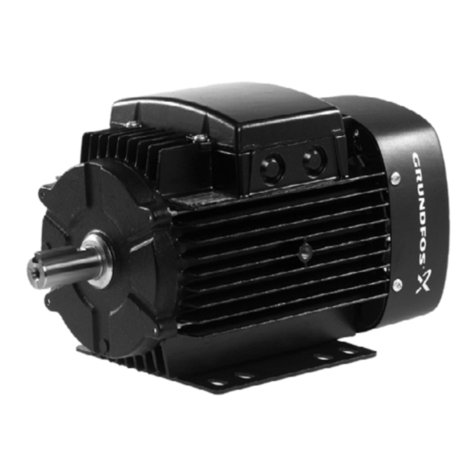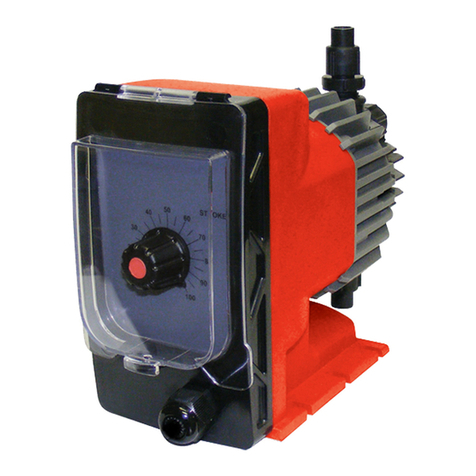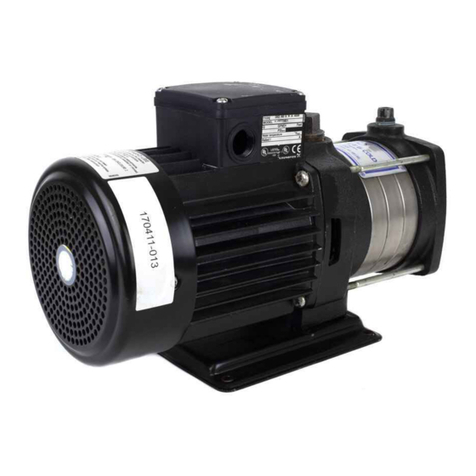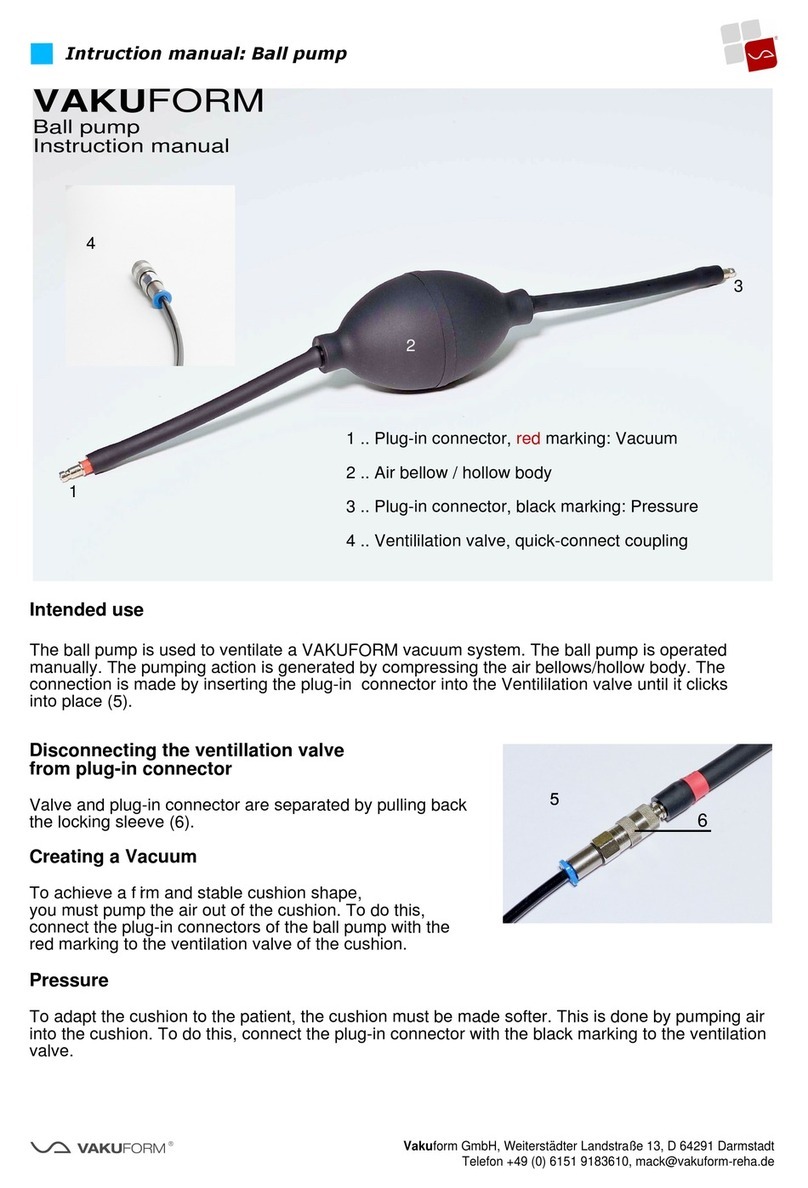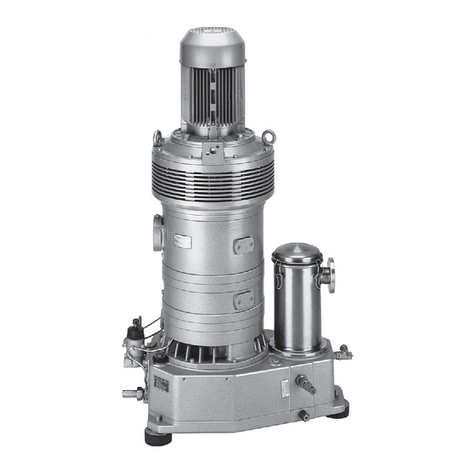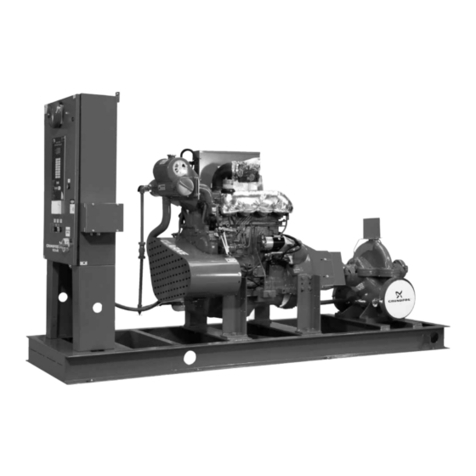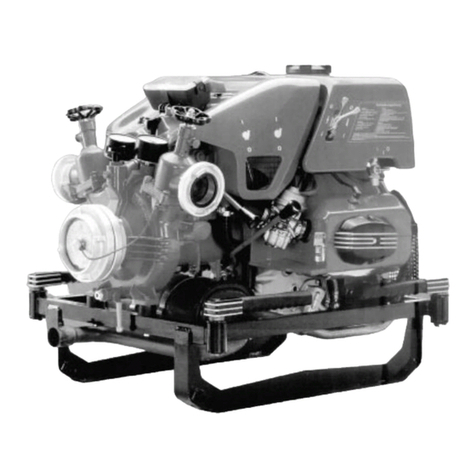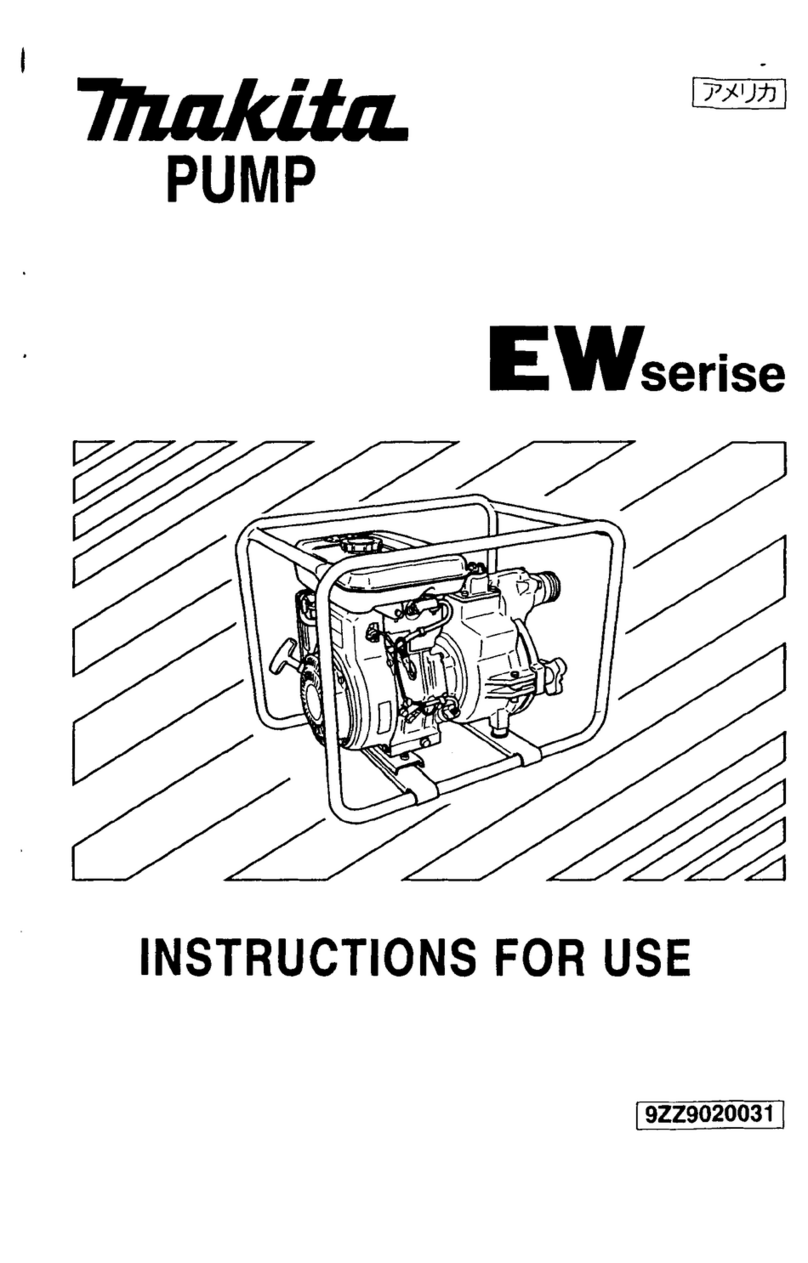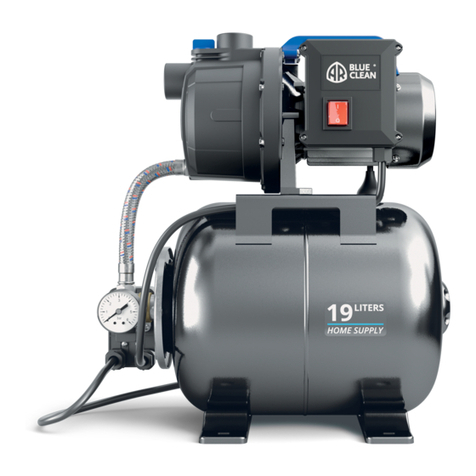
When reducing to pump suction port diameter, use
eccentricreducerswith eccentricsidedownto avoid
air pockets.
Whenoperatingunderconditionswherepumpprime
can be lost during off cycles, a foot valve should be
provided in the suction line to avoid the necessity of
priming each time the pump is started. This valve
shouldbeoftheflappertyperatherthanthemultiple
spring type and of ample size to avoid undue friction
loss in the suction line.
When foot valves are used, or when there are other
possibilities of fluid hammer, it is important to close
the discharge valve before shutting down the pump.
When necessary to connect two or more pumps to
the same suction line, provide gate valves so that
any pump can be isolated from the line. Install gate
valves with stems horizontal to avoid air pockets.
Globe valves should be avoided, particularly where
NPSH is critical.
Ifdischargepipelengthisnormal,pipediametercan
be the same size as the pump discharge port
diameter. If discharge piping is of considerable
length, use larger diameter pipe (one or two sizes
larger).
Ifthepumpistodischargeintoaclosedsystemoran
elevated tank, place a gate valve or check valve in
the discharge line close to the pump. The pump can
then be opened for inspection without fluid loss or
damage to the immediate area.
RECOMMENDED
Install properly sized pressure
gauges in suction and discharge
lines near the pump ports so that
operation of the pump and system
can be easily observed. Should
cavitation,vaporbinding,orunstable
operation occur, widely fluctuating
discharge pressures will be
observed.
Such gauges provide a positive means of
determining actual system conditions and can be
used to great advantage in evaluating system
problems.
2-3. Electrical
2-3.1. General
Except where indicated, all Chempumps are started
with full line voltage. Phase sequence is shown on
the name plate. Refer to Paragraph 3-3, Page 3-1,
for checking direction of rotation. Also see Wiring
DiagramFigures2-2,or2-3,Page2-4dependingon
electrical source characteristics.
2-3.2. Thermal Cut-Out
Unless otherwise specified, all Chempumps are
fitted with thermal cut-outs. The cut-out is a heat-
sensitive bimetallic switch mounted in intimate
contact with the stator windings. It is to be wired in
series with the holding coil in the starter box by
removing a jumper as shown in Figures 2-2 or 2-3,
Page 2-4. Maximum holding coil currents is 3.1
AMPS for 115 volts.
WARNING
Do not connect TCO in series with
main power lead. Excessive heat
build up in the winding area opens
the normally closed thermal switch
which, in turn, opens the holding
coil circuit, shutting off power to the
pump. Be sure to connect the
thermal cut-out as required.
Thermalcut-outsinClassRinsulatedmotorsareset
to open at 425oF. Depending on the application,
specially set TCO’s are sometimes provided. The
pump order data sheet indicates the TCO setting. If
the motor cuts out because of TCO action, there will
be a time delay before the motor can be restarted.
The motor must be restarted manually. DO NOT
RESTARTUNTILYOUDETERMINETHESOURCE
OF THE OVER-HEATING.
WARNING
The thermal cut-out switch does
not provide protection against fast
heat build-up resulting from locked
rotor conditions, single phasing or
heavy overloads. This protection
must be provided for by the current
overload relay heaters in the
magnetic starter. The rating of the
heaters should be high enough to
avoid nuisance cut outs under
running loads, but must not be
oversized.RefertoTable2-1,Page
2-5, for starting and running
electrical characteristics. It is
recommended that “quick trip”
(Class 10 heaters ) be used
becauseofthemorerapidresponse
time.
2-3.3. Starting Equipment
Motor starters (normally not supplied with
Chempump) should be sized to handle the load
required. Start KVA, Full Load Hp and Full Load
Amps Data are listed in Table 2-1, Page 2-5.
Page 2-3





















